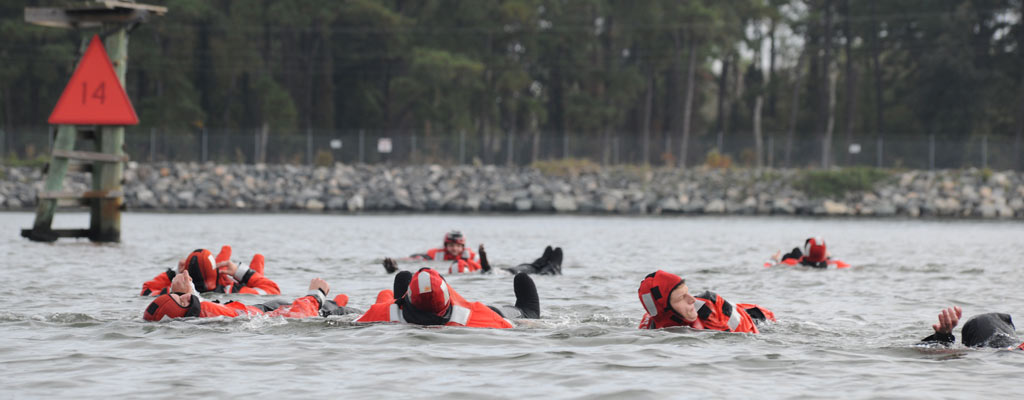Crew Overboard (COB)
Falling overboard can happen on any size boat.
Preventing an overboard situation is relatively easy when you use a little common sense. Sadly, one of the most common causes of COB and subsequently drowning is a crew member relieving himself over the side of the boat in a standing position. Avoid this disaster; go below and use the head.
Three Points of Contact - Good Advice for all Boaters
While on board you should always strive to have three points of contact with the boat. This means, you should have both feet planted and holding on with at least one hand. Or, if you are moving about, hold on with both hands to something firm like a grab rail or stanchion and take one step at a time. If seated, have your feet touching the floor, or holding on with both hands. Having three points of contact assures that your body is positioned in such a way that the majority of your body is in contact with the boat, and you won't be set off-balance easily.
Additionally, avoid standing and sudden movements whenever operating your boat and plan ahead to avoid unsafe operating and environmental conditions like bad weather or rough water. This goes for your passengers too. If your boat is operated while standing, such as a center console, assure solid footing and brace yourself if it has a leaning post or bolster chair. Always wear your engine cut-off lanyard so that the engine stops if you go overboard. Crew-overboard (COB) victims face a number of dangers, including panic, injury during the fall, and hypothermia. For those aboard the boat, quick thinking and coordinated action are essential to an effective rescue.
Read More About This Topic
- Page 2: Crew Overboard Prevention Tips
- Keeping Current on Kill-Switches
- Hypothermia: Cold Water Boating

The Importance of COB Drills
Unfortunately, despite all preventive efforts, accidents can still occur. The need for crew-overboard drills cannot be emphasized enough. Your entire crew should practice the maneuver until recovery is second nature. Before you depart, show everyone where the life saving gear is located and how to use it. Practice first with a floating cushion, then with a swimmer and another boat standing by. These drills can often make the difference between a tragedy and a mishap on the water. It's always a good idea to practice throwing a life ring or cushion - they are quite a bit harder to throw than you might think. With practice and the right equipment, you can safely and quickly recover someone who has fallen overboard. Crew over board procedures should be practiced at the beginning of every boating season and from time to time over the course of the boating season. Doing so may save someone's life - even your own!

